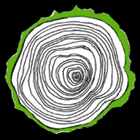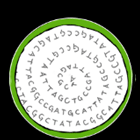British Columbia (BC)’s western redcedar (WRC) industry, currently valued at over $1.3 billion, will be facing a future decline because of a shift from old growth to second growth forests and climate-driven challenges. Second growth forests are not nearly as productive or valuable as old growth forests – they produce less timber volume and wood that is less durable for outdoor wood products. In addition, shifting global temperatures make the future stability of forests uncertain. The ~8 million WRC seedlings that are planted annually are increasingly susceptible to multiple pests, including browsing wildlife and pathogens.
The well-established WRC breeding program, located on Vancouver Island, British Columbia, Canada is the only one of its kind. Managed by the project’s co-leader, Dr. John Russell, we aim to directly address these challenging problems. The current and conventional breeding strategy, however, uses traditional approaches of measuring tree performance phenotypes through long-term field trials. Measuring the durability of wood for outdoor products is an exceptionally slow process (30+ years in field trials) as well as an expensive and difficult process. In contrast, genomic selection (GS) will dramatically reduce the time to select for these traits and deliver improved seedlings to timber companies for reforestation up to 30 years earlier than is currently possible. Our project aims to develop GS statistical models associating genomic and phenotypic variation for multiple traits and to apply GS in the WRC breeding program at a very early age. The goal is to deliver elite selections to industry orchards to produce seed for reforestation. The resultant forests will be better able to withstand climate-driven challenges and produce valuable timber for this iconic species in the future.
 PHENOTYPING
PHENOTYPING GENOTYPING
GENOTYPING